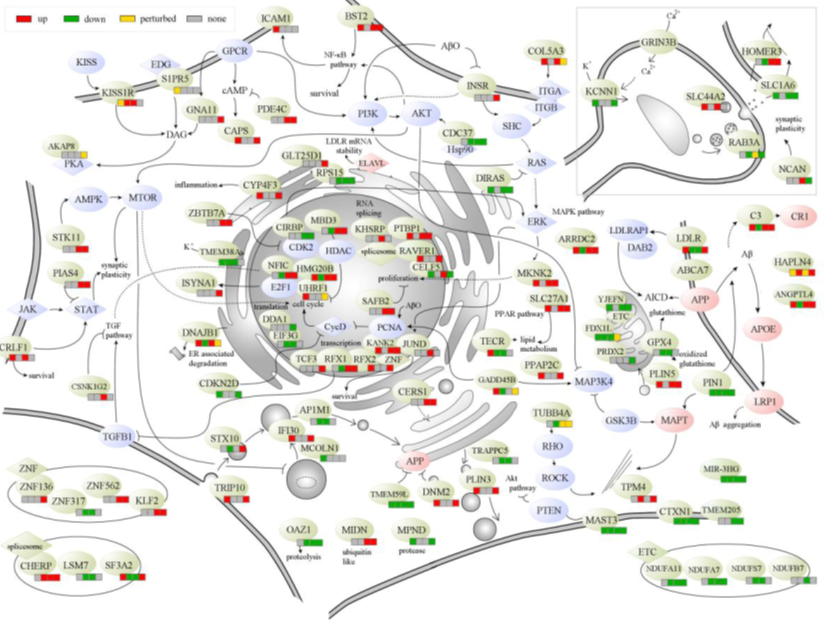Chromosome 19p in Alzheimer’s Disease: When Genome Meets Transcriptome
Recently, a research team led by Prof. LEI Hongxing at Beijing Institute of Genomics, Chinese Academy of Sciences, demonstrated that chr19p was the most significantly perturbed chromosome region in Alzheimer’s disease (AD) brain transcriptome. The combined evidence from genome and transcriptome suggest that chr19p has a special role in AD mechanism.
AD is a major form of neurodegenerative disease mostly affecting elderly people. The genetics of sporadic AD remains unclear despite great efforts from genome-wide association studies (GWAS). Genetic studies have identified several genomic loci including chr19p13.2 relevant to AD susceptibility. However, the functional roles of these genomic loci in AD pathogenesis are far from being clarified.
Towards this end, Prof. LEI and his research team resorted to brain transcriptome to identify chromosome regions with the higher dys-regulation of gene expression in sporadic AD, which may suggest leading or regulatory roles in AD pathogenesis. The researchers found that the most significantly perturbed chromosome region was chr19p, which happened to include a risk locus chr19p13.2 for late-onset AD (LOAD) identified in earlier genetic studies. In addition, APOE cluster, the major genetic risk for LOAD is located on the q arm of chr19. This intriguing connection between genome and transcriptome prompted the researchers to further examine the functions of the dys-regulated genes on chr19p. Finally, the largest dataset so far for AD brain transcriptome was used as an independent validation of the entire conclusion.
Prof. LEI indicated that “With dual evidence from genome and transcriptome, chr19p likely plays a special role in AD pathogenesis.”

A pathway map for selected genes on chr19p dys-regulated during AD pathogenesis (Image by LEI's group)
The work has been published online on the Journal of Alzheimer's Disease.
Contact:
Prof. LEI Hongxing
Email: leihx@big.ac.cn